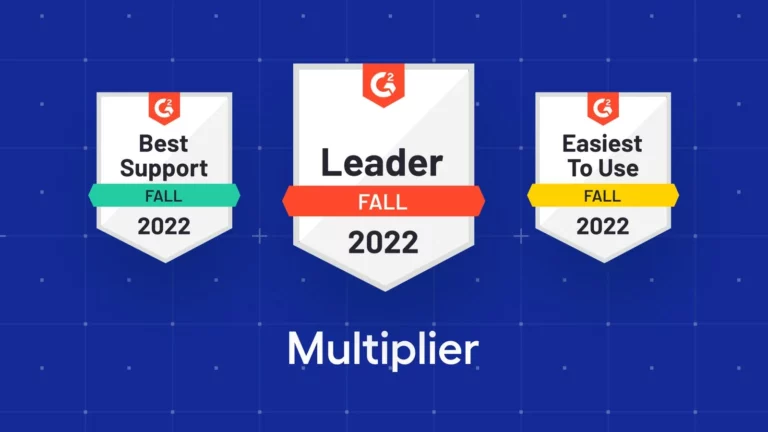The hiring process today in most organizations follows a simple workflow – identify the job role, release an advertisement, interview the candidates and hire the right person. However, many companies laid off a huge number of employees and froze hiring in 2022, leading to big questions on their hiring strategies and future personnel needs.
In fact, according to a Korn Ferry report, almost 85 million jobs can go unfilled by 2030 as there won’t be enough qualified professionals. Companies with more than 250 companies are facing a hard time recruiting and retaining skilled professionals, compared to companies with 10 employees or fewer. Furthermore, as per a report, 2 out of 3 companies are not prepared to deal with the workforce disruption imminent due to technology and newer market trends.
So how to optimize hiring amidst such uncertainty? There is one answer – a strategic workforce plan.
What Is Strategic Workforce Planning?
Strategic workforce planning involves analyzing your organization’s present staffing levels and identifying the appropriate hiring needs. This planning helps avoid the chances of overstaffing or understaffing and fills the relevant skill gaps across various departments.
The planning also helps you understand if your employees need upskilling opportunities to align with the company’s goals. The ultimate goal is to determine a company’s recruitment needs and develop the most cost-effective methods to achieve them.
Why is strategic workforce planning important?
Today’s rapidly moving HR landscape is surrounded by a lot of uncertainty and pressure on internal teams to deliver talent that suits the business’ priorities. With a strategic plan, you can develop the right mix of skilled employees who will accelerate the company toward its goals.
A prudent workforce strategy is important for the following reasons:
Achieve financial objectives
Finance and HR go hand-in-hand when it comes to business and talent planning. They combine the elements of people, processes, and technology to deliver scalable results. The finance team analyses how much the workforce costs the company, and the HR team allocates resources across departments to optimize their team dynamics. In other words, the duo helps various managers hire the right people at the right cost to create a mix of cost-effective and result-oriented talent.
Enhance the employee experience
When you analyze the workforce, it is always important to put people first. As you understand their perspective and draw a strategy, you develop ideas that impact your human resource profoundly.
Strategic workforce planning leads to business agility by capitalizing on people’s skills and unique talents. With an adaptive workforce plan, you can empower your employees to utilize their skills. Furthermore, the departments will witness better productivity and profitability once they have built a team based on future-proof strategies.
Encourage collaboration
Workforce planning involves cross-department communication and understanding the impact of a particular action on another team. You cannot possibly achieve a good result in such an intense scenario without empathy and deep connection between the departments. Hence, you may consider strategic workforce planning as a drill that strengthens the bonds within the organization.
Yes, you can build a team for the future by strategizing your workforce recruitment. However, there are a few more benefits you must know.
Benefits of strategic workforce planning
Strategic workforce planning possesses both tangible and intangible benefits. Let’s take a look at both of them and how they impact your organization:
Cost optimization
This might be too obvious, but it is an important point. As you allocate resources in the right avenues and start streamlining your hiring processes for long-term growth, you will end up with an optimized cost plan. By planning your recruitment efforts beforehand, managing employee turnover, and retaining the right talent, you will ensure better productivity at the best possible cost.
Adapting to demographic and workforce changes
Every organization employs people from different demographics and generations. It is not a secret that both Boomers and Gen Z collaborate for future growth by utilizing their unique skills. Some of them may need additional training to fulfill their potential, while others may be thinking of retiring and moving on to new challenges. You can anticipate and mitigate these challenges with a proper strategy.
Addressing workforce gaps
One of the core fundamentals of a strategic workforce plan is to highlight the skill gaps within teams. This helps in evaluating the employees’ core competencies and how it will impact the company’s long-term growth. Consequently, you can either replace the current employee with a suitable talent or upskill and retain them. In this way, you can set up a dynamic team with various value-addition skills and ensure the longevity of the company.
Building a long-term recruitment strategy
Consider a situation when a senior employee retires from their position. This unforeseen departure can disbalance a team as they are losing an important member. A well-planned long-term recruitment strategy will help you deal with such circumstances and avoid any similar surprises like sudden resignations.
Another aspect of a long-term strategy is internal recruitment, which involves promoting employees to an upper level based on their abilities and the team’s requirements. This move helps save hiring costs and promotes employee retention. Hence, strategic planning is not only about hiring new people but also promoting internal members to suit the needs.
Basic principles of strategic workforce planning
Before you get started with strategic planning for your workforce, you must understand these three basic principles:
Scout the right talent
To accomplish their objectives, some businesses heavily rely on acquiring new team members. They would need to increase their workforce to handle their duties in these situations.
Global barriers have disappeared in the new world of remote business, making it feasible to find the best talent from any corner. To identify the best candidates for your team, broaden your talent acquisition strategy beyond your neighborhood.
To address future challenges and most efficiently fill skill gaps, it is essential to understand precisely which competencies your organization demands of its employees. For recruiting to become strategy and business models to become long-term results, it is essential to identify the experience levels that support strategic skills.
Hire timely
Time is of the utmost essence when finding the desired talent in a fast-paced HR world. HR personnel are tasked to fill workforce gaps at the right time with the right talent. Companies must identify talent distribution and requirements to ensure a streamlined hiring process. Next, build a hiring strategy that fills the talent gaps as per the company’s future objectives.
Plan future costs wisely
Plan for the direct and indirect costs that hiring will entail, such as the price of job advertisements, the time required to interview applicants, the salary of new hires, benefits, and insurance, among other expenses. Your team will stay within the budget if you know what these costs look like. By hiring the appropriate personnel only when those particular talents are required, you can also optimize your costs.
4 steps to a strategic workforce plan
Now that you have a clear idea about strategic workforce planning, it is time to find out how to build one yourself. Follow the steps below to develop an engaged and effective team:
1. Find your objectives
One of the most important purposes of strategic workforce planning is to ensure that your business goals are achievable. As a result, the initial stage of the strategic workforce planning process should involve evaluating both short- and long-term business objectives.
Include the right people in this step, not just a business partner and an HR professional. Line managers, financial services representatives, HR technology professionals, and business leaders are some of the people to include during strategic workforce planning projects.
2. Analyze your workforce
The next step is analyzing the current workforce based on their skills, experience and performance. Business owners and managers must ensure that this step includes evaluating the workforce’s size and quality.
A skills gap analysis will yield important information about the future workforce. For instance, it would reveal the employee’s intended retirement date. The analysis would have given human resources enough time to prepare rather than forcing them to rush to find a replacement for the retiring employee.
3. Anticipate future issues and develop plans
Adequate preparedness for the future provides organizations with a competitive advantage within their industry. Business leaders must build a personnel plan that predicts future business difficulties and provide specific strategies to address them. Future workforce issues include labor market concerns and supply chain issues.
4. Implement and monitor the plan
Work with the leadership and hiring managers to implement the plan successfully. To do so, you must allocate the necessary resources as required and assign roles. The workforce planning strategy adapts as business needs do. You can identify progress and areas for improvement to deal with potential workforce issues by regularly testing and monitoring your plan.
The best practices you must know
Strategic workforce planning prepares companies to adapt to various changes in the workplace. It also ensures business agility during testing times, such as the Covid-19 pandemic, which has already altered how people worldwide live and work.
Many firms started encouraging remote work to guarantee the safety and well-being of employees during the crisis, but remote work is now the new normal. For employees to be productive and achieve their goals, businesses must modify their business strategy to accommodate the remote work paradigm.
Following are some of the best practices to follow while planning for a future-proof and dynamic workforce:
Use the data wisely
The lessons learned and past data can provide deep insights into a company’s business. Examining the patterns that happened when the firm was flourishing and what your workforce numbers were at that time can give a decent indicator of staffing requirements. It helps to break things down into several portions (department, project, etc.) so that the entire picture becomes clearer.
Get the stakeholders’ buy-in
One needs to acquire executive buy-in for a widespread endeavor. This project will touch every function within a business. Unless the leadership team approves certain key decisions, they will not be implemented. One can acquire total visibility of the company’s new course with managerial support.
Practice continuously
Many organizations fail because they do the whole procedure once and forget about it after making early improvements. The workforce will evolve over time regardless of what happens. People will leave. People will retire. People will be promoted. At the same time, the business model will also alter with new product lines. It needs to address all these criteria.
How Multiplier can help expand your team globally
Once you are done with strategic workforce planning, it is time to focus on hiring the best talent across the globe. Today, companies hire confidently from various corners of the globe and diminish the distance via remote collaboration. However, there are many aspects of global hiring that you must take care of – onboarding, compliance, and payroll, to name a few.
Multiplier’s EOR solutions help you onboard from 150+ countries in the world without worrying about compliance measures. Our digital platform helps you release the right payroll and taxes on time and manage the employee’s insurance, leaves, and many other benefits (both mandatory and supplementary).
Connect with us to know more about our services.







